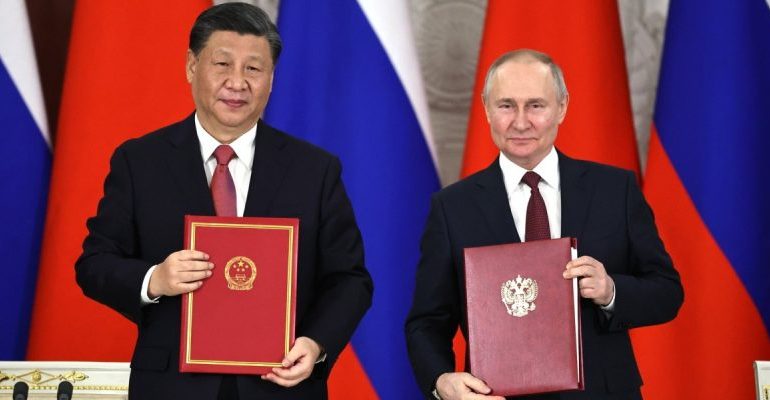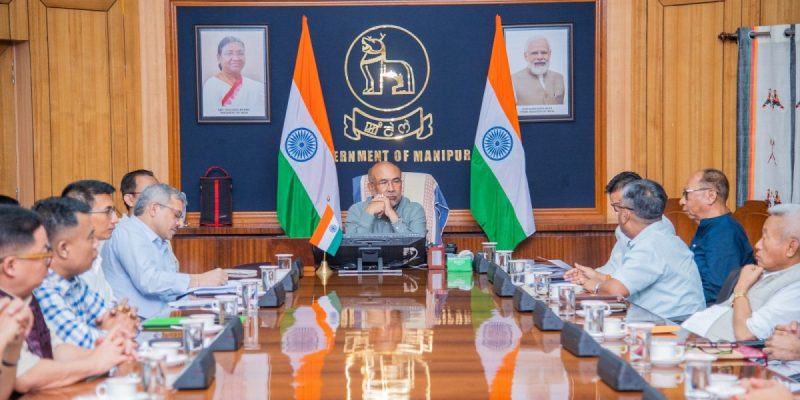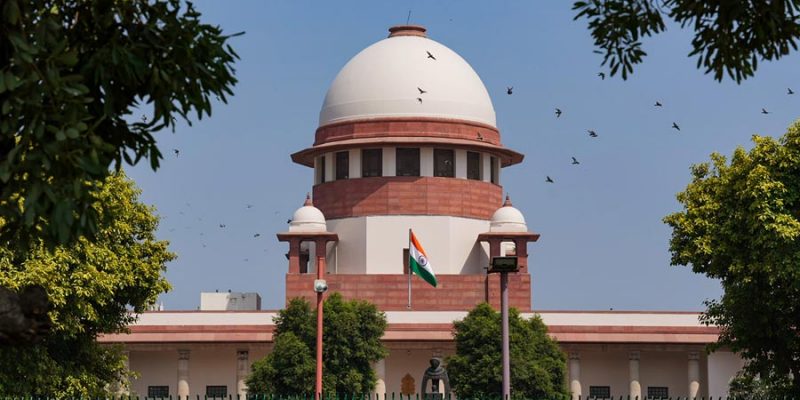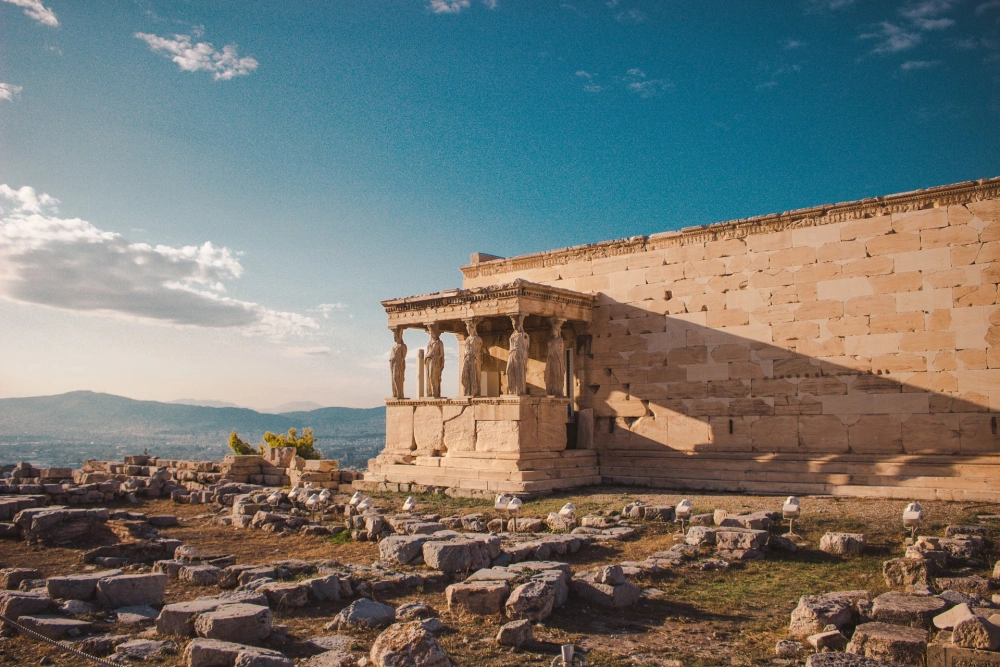Xi’s Russia Visit: What Did It Mean for Ukraine Conflict and What Does It Mean for India?

The first visit by Chinese President Xi Jinping’s visit to Moscow since the start of the Ukraine war was much anticipated. For Russia, it was a demonstration of friendship with an economically powerful country – a crucial show of strength when it is facing sanctions on nearly every aspect of its economy. Keen to keep Moscow firmly in its camp, Beijing also wanted to project Chinese President Xi as a ‘peacemaker’, to further his diplomatic credentials in the wake of the Saudi-Iran agreement.
What were the main deliverables?
Despite the hype over the visit, the main joint statement issued by Russia and China on the second day of the visit on Tuesday was relatively measured.
Just weeks before the start of the Ukraine war last year, the two leaders had pledged that there were “no limits” to the friendship of the two countries. But, that phrase did not make an appearance this time.
“The friendship between the two peoples from generation to generation has a solid foundation, and all-around cooperation between the two countries has broad prospects. Russia needs a prosperous and stable China, and China needs a strong and successful Russia,” said the joint statement on deepening comprehensive strategic partnership.
The second joint statement was an affirmation towards the establishment of a stronger economic relationship, with a large laundry list of proposals that were part of a long-term plan to be implemented by 2030.
Russia specifically noted that the two countries could join forces to become world leaders in information technology and artificial intelligence.
The Chinese state media highlighted that Russia was increasingly going to use the renminbi in trade. President Vladimir Putin said the share of use of the ruble and yuan had already reached 65% of bilateral commercial transactions. It would allow “us to protect mutual trade from the influence of third countries and negative trends on global currency markets,” said Putin.
According to Reuters, the summit produced 14 agreements but did not result in inking a deal for a new gas pipeline to China via Mongolia. “China is well placed to drive a hard bargain, as Moscow needs the deal more: Gazprom [the Russian majority state-owned multinational energy corporation] is looking to China to make up for the collapse of the European market that used to account for 80% of its exports,” observed the Reuters analysis.
The South China Morning Post noted that the joint statement had a more vague reference to the proposed Power of Siberia 2 pipeline, while the Russian President had claimed that it was finalised. Quoting experts, the newspaper reported that the new pipeline would further support the notion that China and Russia are getting even closer with each other in the face of Western sanctions and confrontations.
How has the West reacted?
The two main narratives in the Western media have been that the visit showcases the global ambitions of China and that Moscow has wilfully marked itself as the junior partner.
“A strong China is bolstering a weak Russia. That’s the real headline that describes the showy meetings in Moscow this week between the two countries’ leaders. The Chinese aren’t providing weapons (yet), but Xi certainly offered moral and psychological support in what might be described as a get-well visit to an ailing relative,” wrote David Ignatius in the Washington Post.
For major newspapers like The Guardian and the Financial Times, the main headline was also about Putin playing second fiddle to Xi.
The Wall Street Journal analysed that China’s willingness to wade into conflict marked a “new phase in the country’s vision for itself and its role in the world”. “It sends a message that China and its friends are no longer obliged to conform to a US-led global order, and poses a challenge to Washington, as it tries to shape a world it sees as divided between democracies and autocracies.”

US President Joe Biden with his Ukrainian counterpart Volodymyr Zelenskyy. Photo: Twitter/@POTUS
How did the ongoing Ukraine conflict and its resolution feature in the visit?
As mentioned earlier, China had described Xi’s visit as that of a peacemaker, especially as a follow-up to the 12-point peace plan released last month.
The joint statement said Russia “welcomed China’s willingness to play an active role in resolving the Ukrainian crisis through political and diplomatic means” and also appreciated the “constructive propositions” set out in the Chinese foreign ministry paper.
It said that the “settlement of the Ukraine crisis must respect the reasonable security concerns of every country and prevent the formation of confrontational blocs that add fuel to the flames”.
Russia reiterated that it was ready to restart peace talks, which was welcomed by China.
There was a caustic response from Washington. “If China wants to play a constructive role in this conflict, then it ought to press Russia to pull troops out of Ukraine,” US national security spokesperson John Kirby said.
According to CNN, Xi’s visit to Moscow “failed to move the needle on bringing [the Ukraine] conflict to resolution”.
Instead, the White House heaped praise on the surprise visit of Japanese Prime Minister Fumio Kishida to Ukraine.
Ukrainian President Volodymyr Zelensky told reporters on Tuesday that he had invited China to get involved in talks, but had not yet got a reply.
“We proposed that China become a partner in the implementation of the peace formula… We conveyed our formula across all channels. We invite you to dialogue. We are waiting for your answer. We are receiving some signals, but there are no specifics yet,” he said.
In response, Kremlin spokesperson Dmitry Peskov said that Beijing’s lack of response to the Ukrainian peace formula was “a matter that concerns China-Ukraine bilateral relations”.
He also that President Putin pointed out to Chinese President Xi that many provisions of the Chinese peace plan on Ukraine may be taken as the basis for the Ukrainian settlement when the West and Kyiv would be ready for it. At the same time, he pointed out that so far, no such readiness had been observed, reported TASS, the Russian state-owned news agency.
What does the visit mean for India?
The direct implication for India from the Russia-China joint statement is the criticism of Indo-Pacific policy and the Quad. According to a machine translation, the statement said:
“The two sides expressed grave concern over NATO’s continued strengthening of military-security ties with Asia-Pacific countries and the undermining of regional peace and stability. The two sides oppose the patchwork of closed and exclusive bloc structures in the Asia-Pacific region to create bloc politics and camp confrontation. The two sides pointed out that the United States adheres to the Cold War mentality and pursues the ‘Indo-Pacific Strategy’, which has a negative impact on peace and stability in the region. China and Russia are committed to building an equal, open and inclusive Asia-Pacific security system that is not aimed at third countries, so as to maintain regional peace, stability and prosperity.”
The other mention was the two countries pledging to strengthen coordination on multilateral fora and trilateral formats like “China-Russia-India”.
Since India is also the chair of the G-20, the joint statement does not bode well for reaching a consensus at the September summit. “The two sides strongly condemn politicisation of multilateral platforms and attempts by certain countries to cram extraneous issues into the agenda of multilateral platforms and dilute the primary tasks of relevant mechanisms,” the statement said.
Russia and China had failed to re-endorse the language on Ukraine used in the Bali declaration in the last two ministerial meetings of the G-20 in India.
The Indian establishment has consistently cautioned that the West’s tough approach towards Russia would ultimately drive Moscow closer to China. Thus, the present alignment in the aftermath of the Ukraine conflict comes as no surprise. While India would prefer Russia to distance itself from Beijing’s sphere of influence, that appears highly improbable in the near future.
According to well-known China watcher professor Jabin T. Jacob, the concern that Russia is becoming a junior partner to China is “valid”. While China claims to promote peace, it may be beneficial for them to prolong the Ukraine conflict, which would drain Russia politically, economically, and militarily. This would allow China to expand its influence in Eurasia – it has already begun to provide security assurances to countries such as Kazakhstan and called Belarus an “all-weather strategic partner”, as it does Pakistan.
Despite India’s claims of maintaining strategic autonomy, it has been unable to convert it to effective use. China was able to swing the Iran-Saudi deal and even Japan seems more active by comparison, as seen in its prime minister’s visit to Kyiv. With more external players becoming active in India’s near and extended neighbourhood, New Delhi’s own ability to take the lead and its room for manoeuvre will become constrained, according to professor Jacob.
According to Claude Arpi, the India-based French expert on India-China ties, there are doubts regarding China’s ability to serve as a mediator and a responsible global player. One significant constraint could be the Chinese economy, which has exhibited indications of deceleration and might serve as a barrier to China’s ambitions, as per Arpi.
India’s current focus is on organising a seamless G-20 summit in September, which means navigating through choppy waters, is a task that will be challenging.







